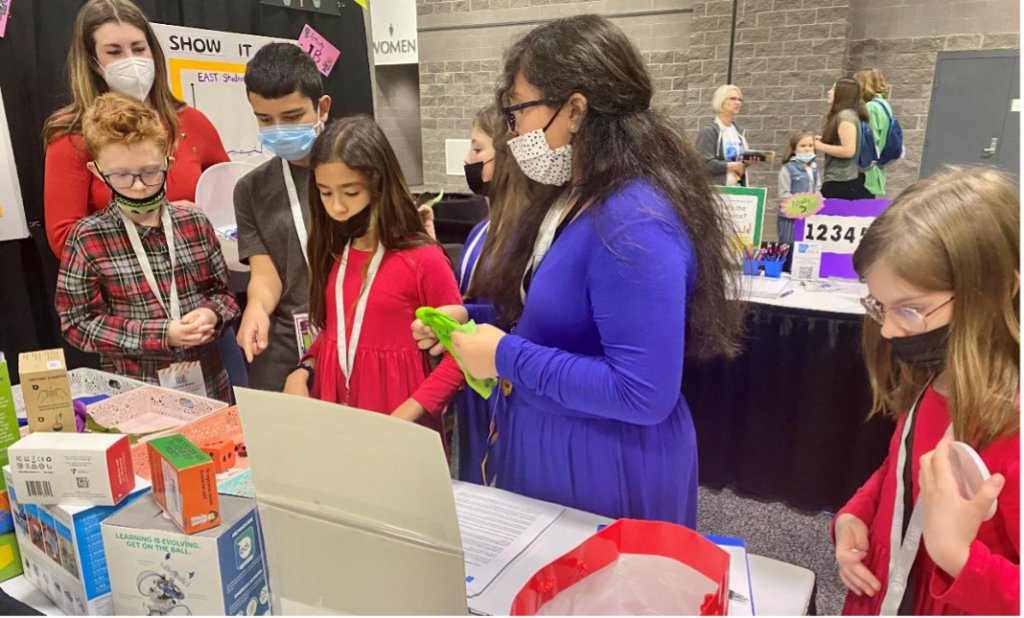When: March 15-17, 2022
Where: Hot Springs, AR
Research Theme: Education
DART Faculty Participants:
EPSCOR Staff
Student Participants:
hundreds of K12 STEM students


Arkansas EPSCoR staff hosted an interactive booth at EAST Conference 2022, a K12 STEM education conference with over 2000 attendees, and directly engaged hundreds of students in data science learning. Using handouts based on math, information visualization, and data science, our team presented basic concepts in a fun setting. Students demonstrated their understanding by answering questions, for which they earned specially designed (and highly sought-after) badge ribbons.
As we endeavor to build our research capacity and infrastructure throughout the state, we are mindful that sustainability is a vital component of our work. Humans aren’t often thought of as “infrastructure,” but they are essential to the operation of a true, multi-institution, multi-disciplinary data science research center, which is what we are creating with DART. We need our citizens to keep working toward and improving upon the goal to sustain it, so we must make sure we are inspiring our younger citizens to explore data science. That can be intimidating to some students, many of whom don’t believe they are capable of or even interested in data science.
Unfortunately, there are essential foundations that many students are missing, which makes it more difficult for them to study data science in college. In our experience, for example, students enter college without adequate math skills (specifically calculus) to pursue a degree in data science. That is why we decided to implement these hands-on games and activities for the students.
Our goal was to have several fun, interactive activities and games for students that made basic data science principles accessible to them, no matter their initial level of comfort with the concept of “data science.” In order to make it as engaging as possible and to demonstrate that data science is NOT computer science, we purposely created activities that used no technology. For example, the most popular activity involved students sorting random dollar-store objects into categories of their choosing, which enabled us to discuss concepts such as attributes, and ultimately algorithms. The students were clearly amazed with themselves when we illustrated that they were literally doing data science.
We feel that building K12 students’ confidence in their own abilities is key to fostering their sense of what is possible, which will hopefully steer more of them toward a degree in data science, thus ensuring sustainability of our human “infrastructure.”